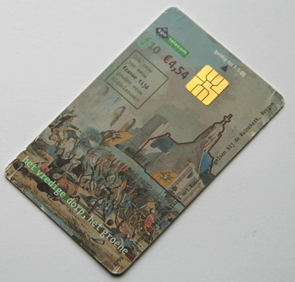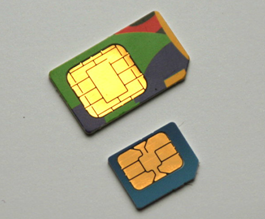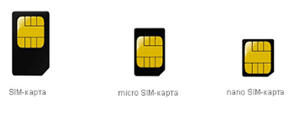SHARE WITH FRIENDS:
About 20 years ago, when the first mobile devices were created, phones were connected to the network using special numbers written on them during production. Of course, this has caused a number of inconveniences for both the buyer and the manufacturer. As a solution to this problem, scientists have invented additional cards with a special chip that acts as a subscriber ID. Such cards are currently actively used in various networks such as GSM, UMTS, LTE, which store a number of important information that the mobile operator needs. SIM (subscriber identity module) The word is derived from English, subscriber identification forms meaning means. Time SIM card types have also changed over time. Here is a brief description of them:
Standard SIM card
If I say that the first SIM-cards were in the form of current bank plastic cards, you might find it funny. But, in fact, the first SIM-cards were installed on such large-sized mobile phones that they were so large and could accommodate it. These SIM-cards contain the subscriber's phone number and serve to connect the phone to the network. Of course, in addition to his memory, it was possible to store the number of several more contacts belonging to the subscriber.

Mini SIM card
Cards with such a form factor were the next stage in the development of the SIM module. The mini SIM card, which is more compact than previous card types, has not changed in many years. Dimensions - 25x15x0.76 mm. It was possible to install a mini-SIM-card in the case of a mobile phone, to store in its memory 250 contacts, as well as information about the mobile operator and the subscriber. So far, some smartphones and most mobile phones with buttons use a mini SIM card.

Micro SIM card
Micro SIM cards are smaller than mini SIM cards. Such cards are also called 3FF. In this case, the number 3 indicates that this type of SIM-card belongs to the third generation modules. We have already mentioned about the first and second SIM card types. The micro SIM card measures 15x12x0.76 mm, the inventors cut out the unnecessary space around the card, leaving only the contact chip that connects to the phone. Most mobile phones manufactured a year or two ago use this type of card.

Nano SIM card
The smallest and at the same time the most popular type of SIM-card available today. The 12,3 × 8,8 × 0,67 mm Nano SIM card (4FF) was approved by the European Telecommunications Institute in October 2012. At the same time, MultiSim cards, which combine mini, micro and nano SIM-cards, are also offered by operators for the convenience of subscribers. Over time, this SIM card may become obsolete. Because now some mobile operators are also using the technology of sending a subscriber ID number to the phone online. In this case, the subscriber is provided with a virtual identification module.
Mavlon Marasulov Terabyte.uz
